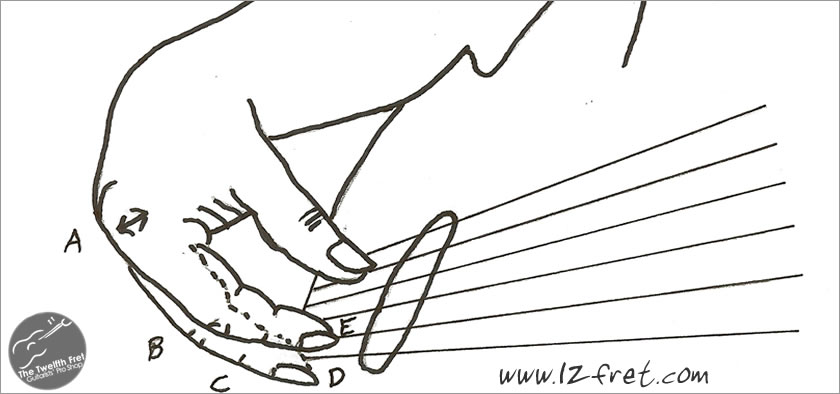
The Right Hand and Harmonic Support
The guitar is a great instrument for many reasons, it’s a folk instrument, meaning “of the people”. It’s compact, portable, capable of different tunings and it comes in many different varieties; acoustic, electric, nylon string, baritone, 12 string or even 7 string. With this much variety it’s no wonder there are so many musical styles that the guitar can cover. One thing it is not however, is a piano. By that I mean it does not have the capability of playing 2 or 3 different parts at the same time, the way a piano player can cover chords, melody and bass line at the same time.
Actually, a good guitar player can do that, it’s just harder on a guitar.
The guitar is an excellent choice for accompaniment to a voice or a horn, but what do you do if there is no bassist to lay the rhythmic foundation? You can leave that part of the groove out of your arrangement, or you can try to get both parts going at once. That’s where finger style comes in. For this style of playing, the right hand needs to get a serious wake up call. It’s a style that demands independence of the fingers of the right hand. When I’m asked for this from a student, I always recommend learning some classical guitar (no matter what style of playing you’re into). In classical guitar, the right hand uses the 1st three fingers of the right hand to cover a melody line and some harmonic support, while the thumb plays the lowest voice, the way a piano player would use the left hand. This is a tall order, requiring time and commitment, but in the long run hugely improves versatility, particularly for the player that doesn’t have a bassist or rhythm section handy.
A good way to start down this road is to use the thumb in an opposite rhythm to the rest of your right hand. Even an independent thumb playing a bass line , while the other three fingers of the right hand “strum” in tandem, to cover the chords, gives a great representation of the groove of the song. It’s a perfect accompaniment for a singer or a horn, or any situation that’s minus a bass player.
►In the video below, I played through a blues using this method.
The line the thumb plays is a “walking bass” while the other 3 fingers pluck the strings in a shuffle rhythm. You will need to use some creative chord fingerings to get the bass line to continuously “walk”. It’s like giving the bass line primary importance while the chords are secondary. The swing feel comes through loud and clear and the chords still deliver harmonic support.
~Richard Smyth, The Twelfth Fret
